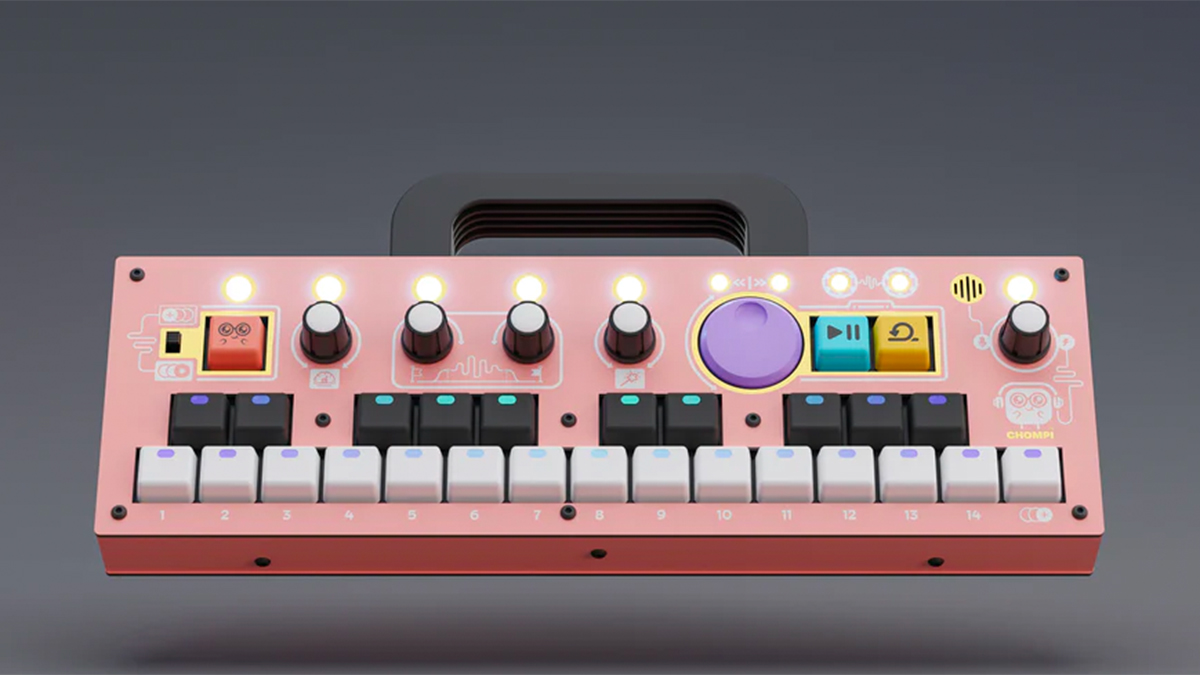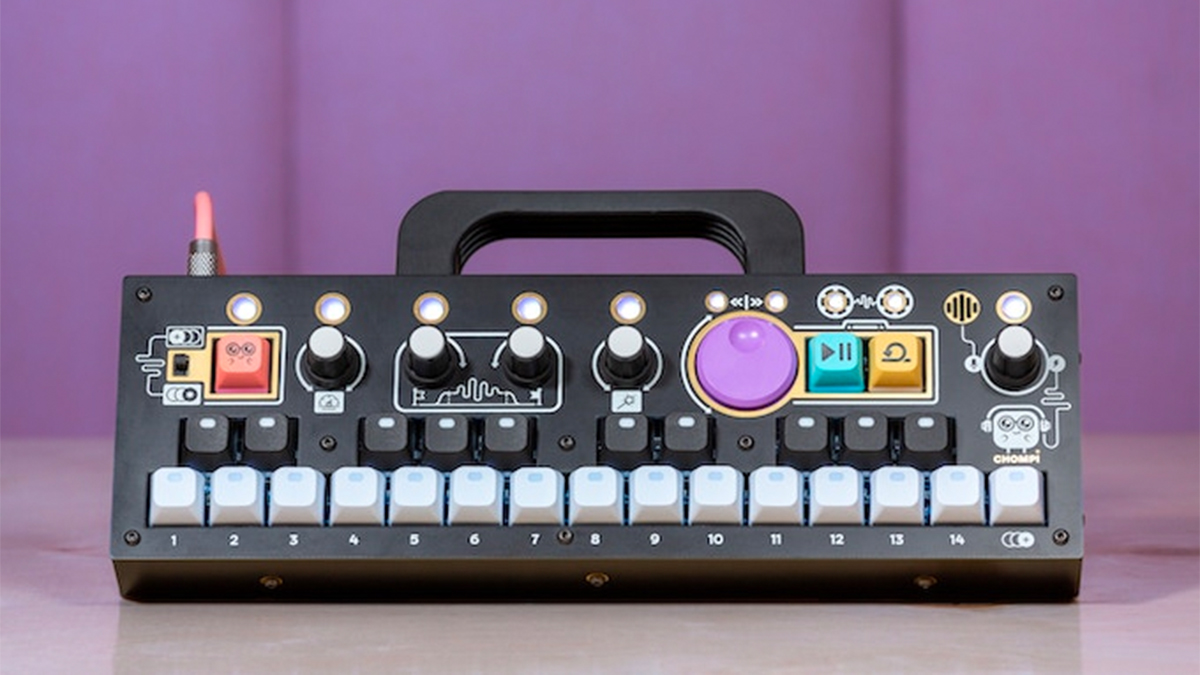The Chompi sampler has munched through its funding target and raised a whopping $1 million on Kickstarter
This one has gone down pretty well, then

When we first got wind of the Chompi sampler a couple of weeks ago, we wondered if its quirky, toy-like nature might put some people off. We needn’t have worried, though: after just a minute on Kickstarter, the machine romped past its modest $30,000 funding target, and has gone on to raise more than $1 million.
It’s fair to say, then, that Chompi’s less-is-more, fast-and-furious workflow has captured the internet’s imagination.
As previously reported, the device enables you to capture a sound via the built-in mic and see it instantly mapped across the two-octave mechanical keyboard. Samples can be edited in a variety of ways, and there are seven voices of polyphony and 14 preset slots.
Effects processing couldn’t be simpler - the multimode filter, lo-fi saturation, granular delay-reverb and other FX are all controlled from one knob - and the tape-style looper enables you to stack-up layers of sounds. The transport knob controls tape scrubbing, loop playback speed/direction and other features.
We suspect that Chompi’s kid-friendly interface has played a big part in its early success, as people seek to recapture the childlike sense of enjoyment that making music with technology first gave them.
USB-C powering means that you can use Chompi anywhere - assuming you have a power bank, that is - while other connectivity includes stereo aux I/O, a headphone socket and MIDI I/O (all on 3.5mm jacks). Your samples are stored on a micro SD card.
The regular price of Chompi will be $599, but the Kickstarter price is $499. There’s also a limited-edition pink version that costs $599. If you order now, you should get one by November 2023, but based on the amount raised so far, we’re guessing you’re going to have to join a pretty long queue.
Get the MusicRadar Newsletter
Want all the hottest music and gear news, reviews, deals, features and more, direct to your inbox? Sign up here.




I’m the Deputy Editor of MusicRadar, having worked on the site since its launch in 2007. I previously spent eight years working on our sister magazine, Computer Music. I’ve been playing the piano, gigging in bands and failing to finish tracks at home for more than 30 years, 24 of which I’ve also spent writing about music and the ever-changing technology used to make it.
“Do you dare to ditch those ‘normal’ beats in favour of hands-on tweaking and extreme sounds? Of course, you do”: Sonicware CyDrums review
“Excels at unique modulated timbres, atonal drones and microtonal sequences that reinvent themselves each time you dare to touch the synth”: Soma Laboratories Lyra-4 review









